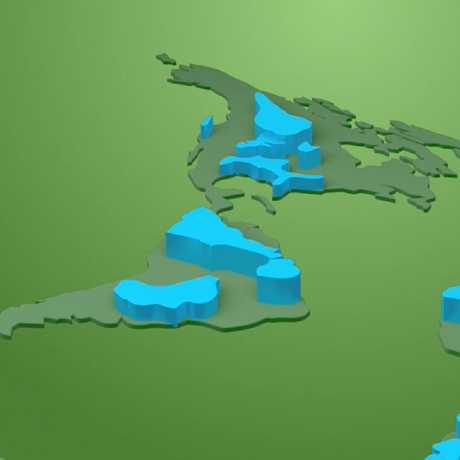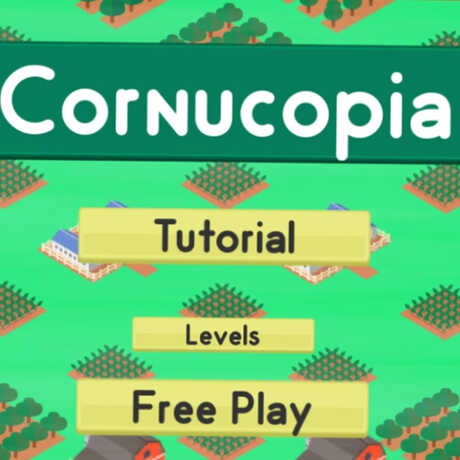Food, water, energy—we need solutions to the environmental issues of our day.
© 2015 California Academy of Sciences
In this two-day lesson, students will be introduced to several water sustainability issues, including access to clean freshwater, groundwater depletion, agricultural water use, and water waste.
On Day 1, students will explore groundwater and how the depletion of groundwater can cause land subsidence in regions like California’s Central Valley. Students will also learn about how agricultural water use for different crops compares to the amount of water required for raising animals on farms and ranches.
On Day 2, students will read some of the Blue Planet Network’s Stories of Water to learn about how different people around the world struggle to have access to clean water and some of the ways they have addressed this issue. They will also explore their own water use habits and ways they can reduce water waste in their home using a water calculator from the Alliance for Water Efficiency and a leaky faucet calculator from the U.S. Geological Survey’s Water Science School.
- What are some water sustainability issues we are facing around the world?
- What controls whether or not people have access to clean freshwater?
- What is water waste? When or how is water wasted?
- What can happen when we pump too much water out of the ground?
Students will
- Discover some of the water sustainability issues people are currently dealing with around the world, like water waste, access to clean freshwater, agricultural water use, and the depletion of groundwater.
- Connect with real stories and data to learn more about the people and places where these water sustainability issues are present.
- Sustainability: the ability of a system to last or endure; meeting current human needs without endangering our descendants
- Aquifer: an underground layer of rock, sand, or gravel where water can be stored within cracks or pores

- Computer with Internet access
- Projector
- Flipside Science video: How Do We Meet the Growing Need for Water?
- A computer lab with at least one computer for every 2 students (for Day 2 only)
- Student Journal (1 per student, also available in Spanish, Simplified Chinese, and Traditional Chinese)
- calculators
- 1-3 glass jars filled with sand saturated with water
- 4 heads of broccoli (optional)
- 2 small bags of almonds (~ 1 handful is enough) (optional- omit these if you have students with nut allergies in your class)
- 2 small bowls of strawberries (optional)
- 1-lb weight (optional)
- 2 empty clean gallon plastic milk jugs (optional)
- Print out one Journal per student.
- Set up stations around your classroom with the following materials:
Agricultural Water Use Station: calculators; optional: 1 empty gallon plastic milk jug, 1 small bag of almonds, 2 heads of broccoli, 1 small bowl of strawberries, 1-lb weight
Groundwater Supply Station: 1 glass jar filled with sand saturated with water
- Introduce your students to water sustainability and environmental issues by showing them the Flipside Science: How Do We Meet the Growing Need for Water? video.
- Ask for volunteers to talk about one or two things they learned from the video, and make a list of these things on the board. Explain that the youth in the video are talking about some important environmental and sustainability issues related to water. Check that students have an understanding of what ‘sustainability’ means.
- Replay the video for students a second time.
- Working in pairs, students will dive deeper into two of the water sustainability and environmental issues introduced in the video (they will explore the other two issues during the following class period or hour).
- Divide students as appropriate among the stations so small groups can explore the materials up close. It may be best to have students pair up with a single thinking buddy as they complete their journal.
- Give students 15 minutes at each station, and then have them switch.
- After students have completed the two activities, bring everyone back together as a class.
1. Ask students to share some of their thoughts from the agricultural water use station activity.
- How does the amount of water it takes to grow broccoli compare to strawberries? (On an area of land the size of a football field: approximately 81,000 gallons of water for 15,000 heads of broccoli, 1.1 million gallons of water for 1 million almonds, 200,000 gallons of water for 500,000 strawberries)
- How does the amount of water needed to raise farm animals compare to the water needed to grow fruits and vegetables? Why is so much more water needed to raise animals?
- What other factors might come into play when making your decision about what to produce on your farm? (my total area of land, my annual availability of water, market prices for each product, my personal preferences (e.g. pigs are smelly!), how long it takes to raise animals vs. plants, etc.)
2. Ask students to share some of their thoughts from the groundwater supply station activity.
- Why is the amount of groundwater in many parts of California decreasing? Where is the groundwater going?
- Groundwater is often depleted more quickly during drought years compared to wet years. Why might this be?
- What are some negative impacts of pumping too much groundwater? Why would land sinking be bad for buildings or houses? How might groundwater depletion impact ecosystems in rivers and streams?
Students will continue to work through the two remaining activities their Journals: Wasted Water and Who Gets Clean Freshwater? These activities require students to have access to computers with Internet connections.
Teacher tip: If you are not able to devote two days to all of the Journal activities, you can assign the remaining activities as homework!
1. Book the computer lab for a full class period, and have students work in pairs to complete the rest of their journal. Leave 15-20 minutes at the end of the class period for reflection and discussion.
1. Ask students to share some of their thoughts from the two web activities.
- What are ways that you use water at home? Do you think you waste any water at home (use more than you could if you changed your behavior)?
- What are some other sources of water waste at home?
- What determines whether or not people have access to clean water? What are the challenges that different people deal with to get clean water?
- Are any of the challenges you read or heard about in the stories present in your city or community that you know of?
2. Individual quiet writing reflection: Have students consider all four of the water sustainability and environmental issues that they explored over the past two days. Ask them to consider if they feel impacted by any of these issues. If so, which ones? How are they impacted? Do they know anyone else directly impacted by the same or different issues? Are there any easy solutions to these kinds of issues?
- Santa Clara Valley Water District: Where does our water come from? Groundwater
- San Francisco Public Utilities Commission: Our Water: Many Users, Many Uses! and Let’s Save Water! Every Drop Matters
- California Academy of Sciences Science News article: Monitoring the Drought from Space
- The Water Education Foundation: Project Wet
- U.S. Geological Survey’s Water Science School: Leaky faucet calculator
- U.S. Geological Survey CA Water Science Center: Delta-Mendota Canal: Evaluation of Groundwater Conditions & Land Subsidence
- Alliance for Water Efficiency's home water use calculator
- Stanford Woods Institute for the Environment: Understanding California's Groundwater
NGSS Disciplinary Core Ideas (Grades 6-8)
-
MS-ESS3.C: Human Impacts on Earth System
NGSS Science and Engineering Practices (Grades 6-8)
- Using Mathematics and Computational Thinking
- Analyzing and Interpreting Data
- Constructing Explanations
California's Environmental Principles and Concepts
- Principle I: Concept a
- Principle II: Concept a, c
- Principle IV: Concept a, c
- Principle V: Concept a

How Can We Conserve Our Water Resources?
In this lesson, students will practice rapid ideation—an important step in design thinking—by brainstorming solutions to issues surrounding global water issues.

While playing Cornucopia—a fast-paced farm simulator—you manage a plot of land, planting crops based on a number of factors, in order to meet a variety of food orders. Keep an eye on your water meter and your crop yields, and earn technology upgrades to make your farm as successful as possible before the season ends.
Humans depend on water, and our need for this precious resource is growing alongside our population. How will we meet the needs of the future without harming the environment? In this unit, we'll explore environmental issues related to our water use, and learn how simple choices we make impact our planet.
Browse All Materials:
- Activity: Your Hidden Water Footprint
- Activity: Exploring Our Growing Need for Water [you are here]
- Activity: Rapid Brainstorming: How Can We Conserve Our Water Resources? [up next!]
- Activity: Sustainable Water Solutions: Weighing the Pros and Cons
- Video: Desalination
- Video: Water-Wise Farms
- Video: Waste Water Recycling
- Video: Recharging Aquifers
- Activity: Fresh Solutions: Design Thinking Challenge
